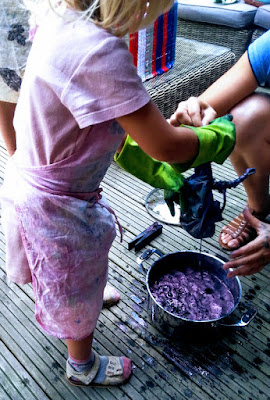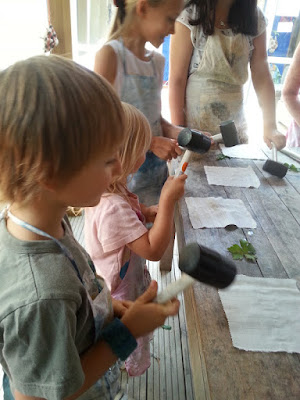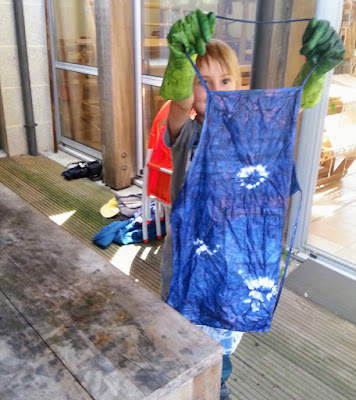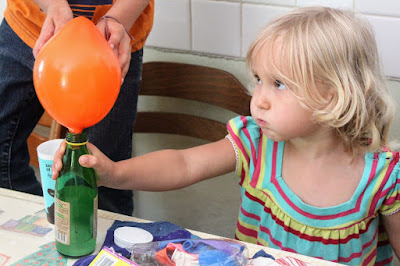 |
| Scuscinio through the trees |
This has definitely been true of Noah and his fascination with Knights, castles and the middle ages. Each time I think it's waning, it pops back up again and we do a new round of hunting for books, finding documentaries and planning places to visit.
 |
| The impressive Tour de Ronde |
That's what led us to the Chateau de Suscinio last weekend and a wonderful participative guided tour. Suscinio was not a fortress castle but more of a home although as was current at the time, it wasn't permanently inhabited. The tour we took was all about the different jobs involved in getting the castle ready for the Duc de Bretagne whenever he decided to visit. It was fascinating learning about the artisans, the cooks, the cleaners, furniture movers, etc that worked to get the place up to standard.
 |
| Suscinio's treasure : beautiful floor tiles |
Each family was given a role that they then explained to the rest of the group at a pertinent moment during the tour. Our family were the "Les Officiers de la Garde Robe". It sounds terribly important doesn't it! What it actually meant was that we were in charge of repairing and keeping clean all the clothes and linen as well as taking care of the precious jewels. Not too bad but certainly not quite as glamorous as the title implied.
 |
| Detail from Suscinio's treasure |
We learned so much during this visit about the ordinary people who worked and lived there. Once again, I was surprised and pleased to see how much we still have to learn about a subject we already know a lot about. The same thing happens with each new book we find or film we watch. Although there's a lot of crossover, there are always little hidden gems.
 |
| Chateau de Suscinio imposing over the moat |
Hopefully the children will take away from this the importance of using many source materials whenever researching something. And more importantly that there is always more to learn in life and even when we become something of an expert on a subject, as Noah surely is now in this subject area, there can still be more to learn.




































